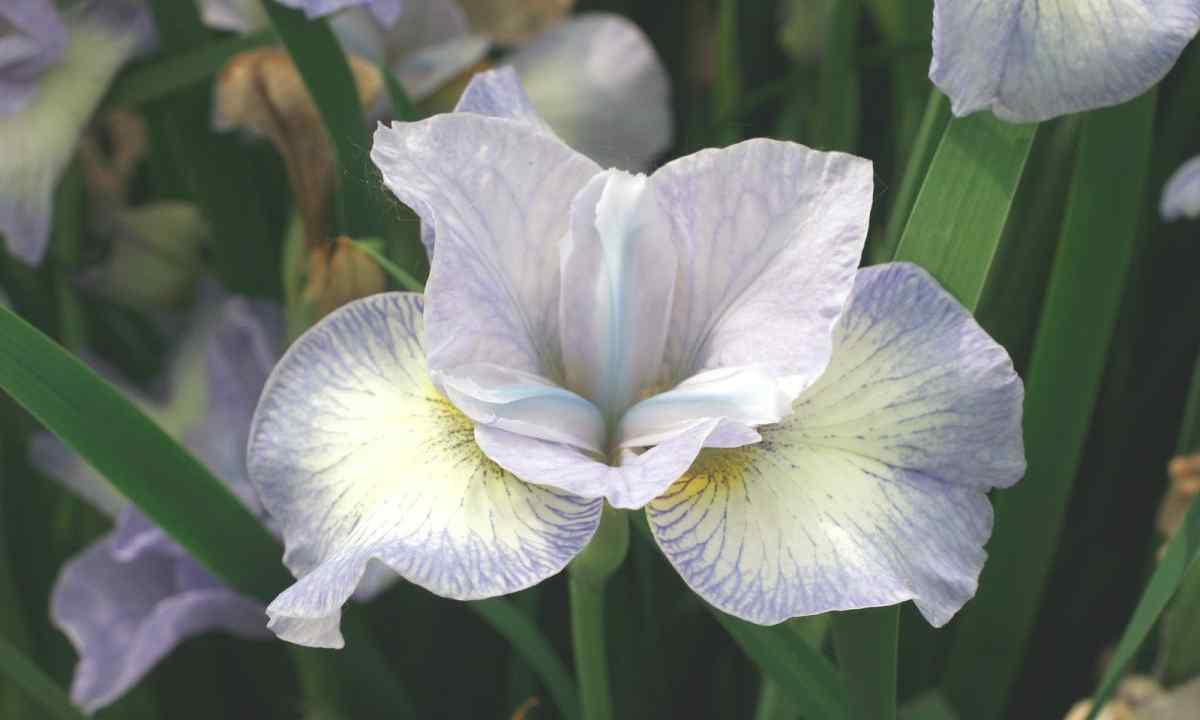The Siberian iris belongs to plants, unpretentious, winter-hardy, resistant to various diseases and wreckers. It has transferred all the merits to the posterity that has formed basis for creation of set of magnificent grades of this plant.
General description
The Siberian iris represents perennial plant with powerful root system which is capable to improve structure of the soil. Its height can reach 1 meter. Leaves at this plant xiphoidal, thin, flat, with the wax raid, are most often collected by fan. Bright flowers of iris blossom approximately for 5 days in May-June.
The flower has large peduncle from 6 lobes and differs in graceful form and various saturated shades. External and internal parts of flower have the different size, the form and coloring. Most often they blue or violet color. Fruits of plant represent long trihedral boxes, seeds large, ribbed, brown color. The grades received on the basis of iris Siberian can be united in section of beardless irises Limniris.
Cultivation conditions
The Siberian iris well grows on fertile soils, does not tolerate excessive dampness and strong blackout. The surplus of nitrogen fertilizers is capable to cause various diseases in this plant. The most intensive growth is observed on the loamy soil with neutral or subacidic reaction. The earth is previously dug over on depth about 20 cm, then to the place of landing bring humus, potassium, phosphorus and nitrogen, fresh manure it is admissible to bring only in advance, it is the best of all in year. The most optimum time for landing is the end of August or the beginning of September. The subsequent care for irises consists in constant weeding, loosening, watering and fertilizing. Periodically plants are replaced, otherwise separate parts of rhizomes are forced out on the surface of the soil. It, in turn, leads to power supply reduction of area, irises cease to blossom, leaves become small, the general decorative effect of bushes decreases. Therefore each 6-8 years of plant need to be replaced. In low-snow winters the irises can be covered with layer of peat, humus or fir twigs.
Application
Thanks to the decorative effect the irises are widely applied in creation of various flower beds. Often they are placed near reservoirs or used for creation of monobeds. The Alpine hills can also become the suitable place for these plants. They beautifully look in composition with poppies, lupines, phloxes, peonies, sedumy, kamnelomky and various bulbous. However it is worth to remember that irises are not too competitive, other well expanding perennials easily suppress them. Also keep in mind that combinations, contrast on color, most show to advantage, for example, dark irises will better look against the background of light colors. Besides, these flowers give steady cut.

